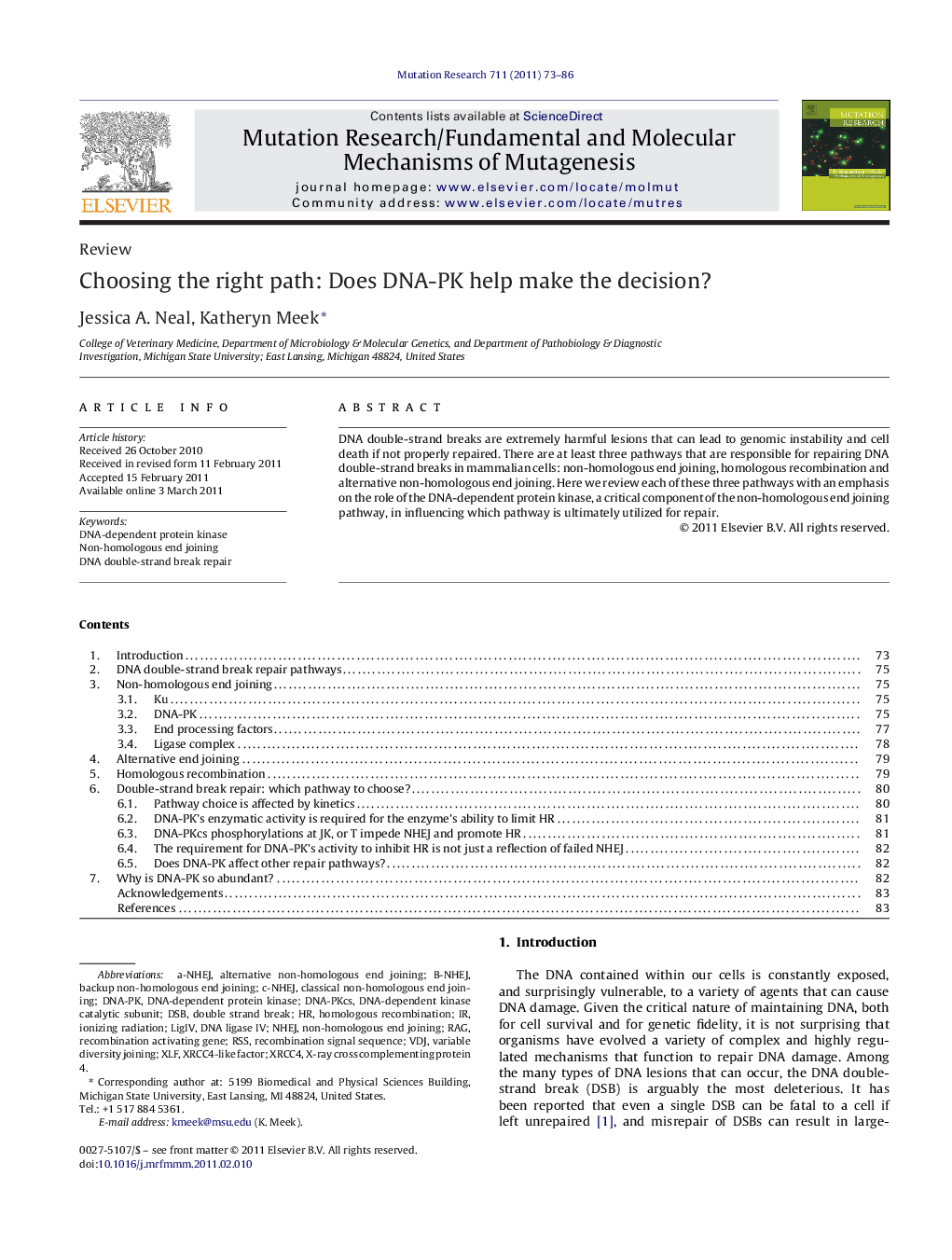| Article ID | Journal | Published Year | Pages | File Type |
|---|---|---|---|---|
| 8456000 | Mutation Research/Fundamental and Molecular Mechanisms of Mutagenesis | 2011 | 14 Pages |
Abstract
DNA double-strand breaks are extremely harmful lesions that can lead to genomic instability and cell death if not properly repaired. There are at least three pathways that are responsible for repairing DNA double-strand breaks in mammalian cells: non-homologous end joining, homologous recombination and alternative non-homologous end joining. Here we review each of these three pathways with an emphasis on the role of the DNA-dependent protein kinase, a critical component of the non-homologous end joining pathway, in influencing which pathway is ultimately utilized for repair.
Keywords
Related Topics
Life Sciences
Biochemistry, Genetics and Molecular Biology
Cancer Research
Authors
Jessica A. Neal, Katheryn Meek,
